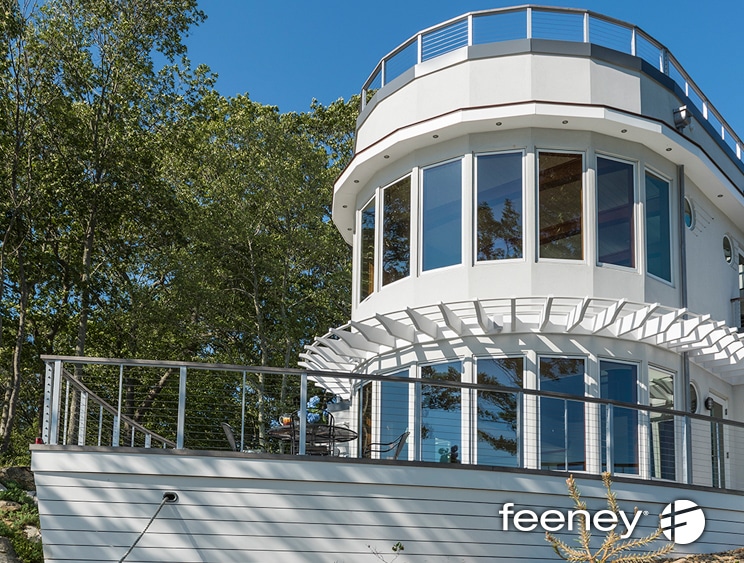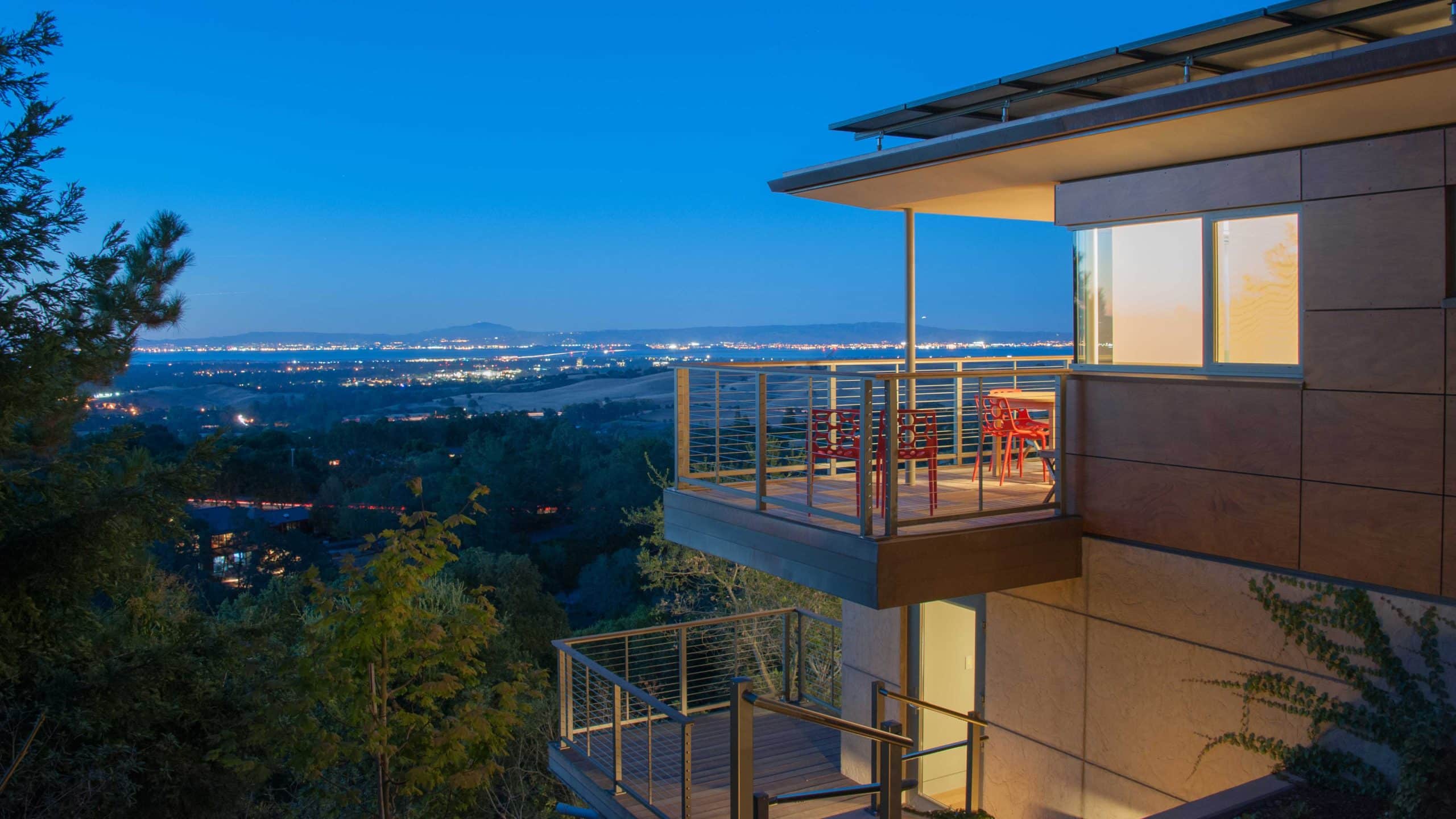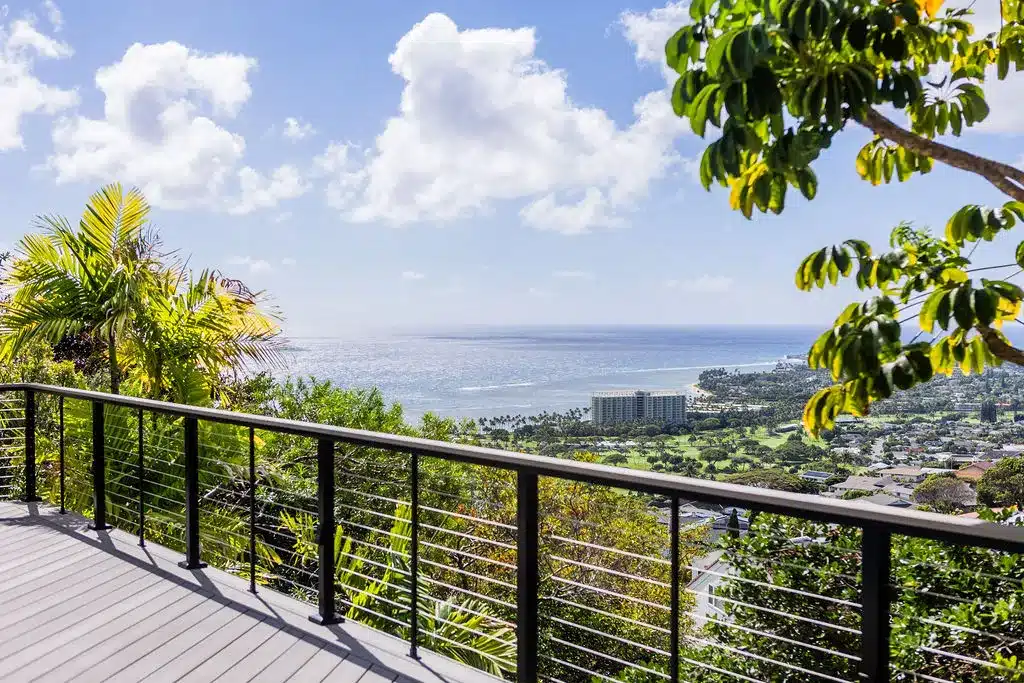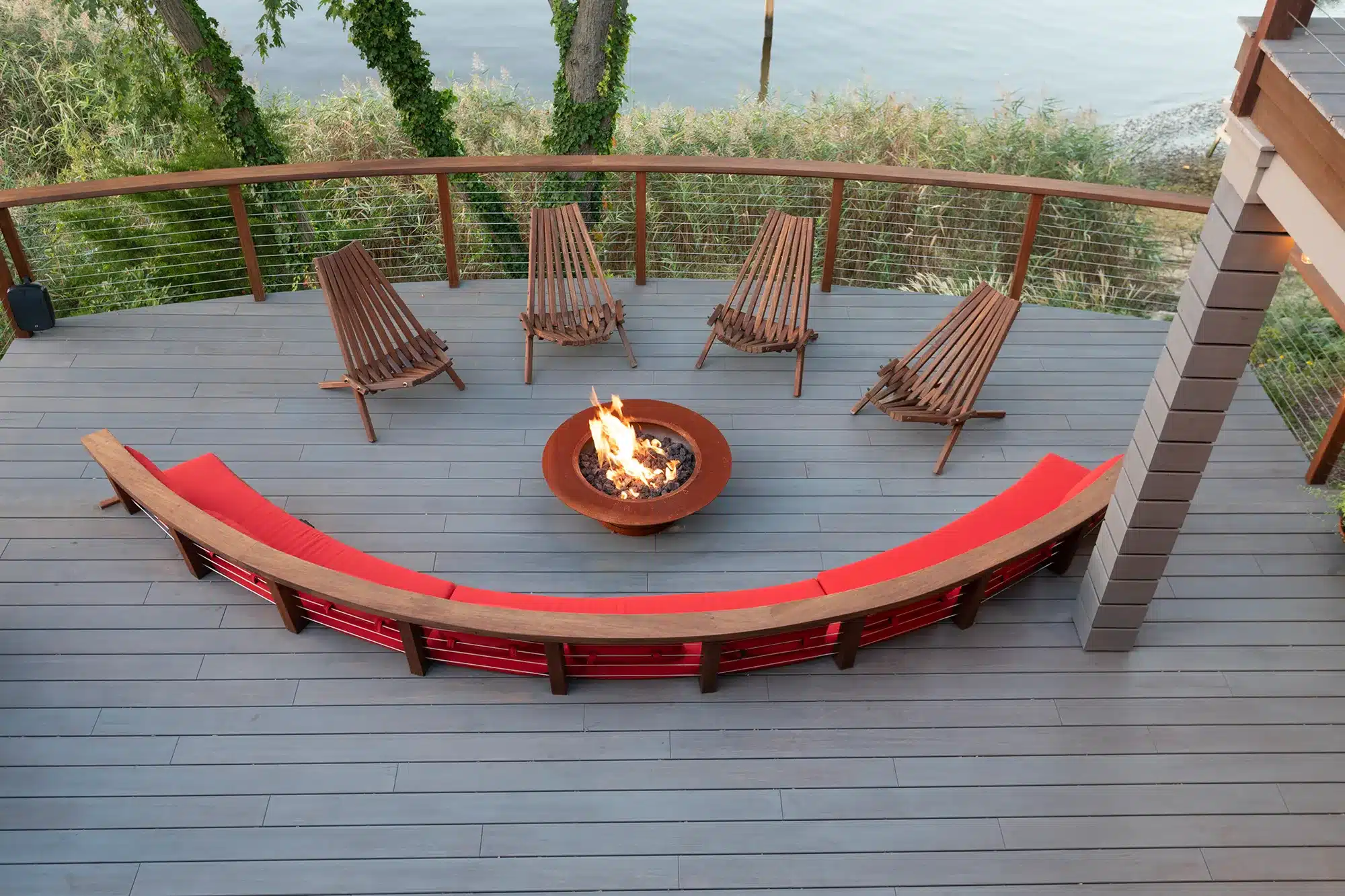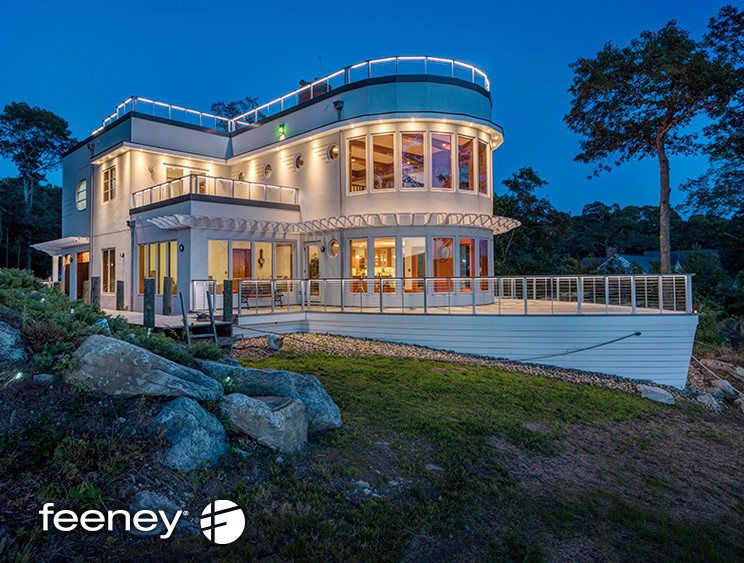
Aluminum railing system with stainless steel cable infill highlights multiple decks on distinctive waterfront home
With its sleek, streamlined appearance, cable railing is sometimes thought best-suited for homes with a contemporary aesthetic. However, cable railing can work equally well with more traditional and formal architectural styles. Consider, for instance, a unique home built on a 60-foot bluff overlooking the Niantic River in Waterford, Connecticut. Perched atop the mile-wide river, the eye-catching home resembles a steamship from the 1920s.
Looking for someone who could take his vision for the home to the finish line, the owner approached long-time contractor Jonathan Laschever and asked if he would be interested in completing the design and build out of the home. The owner had previously worked with an architect to develop a design with a timeless, nautical aesthetic, but – unable to come to a consensus on the details – they had amicably parted ways. Laschever welcomed the opportunity to bring the “boat house” to life.
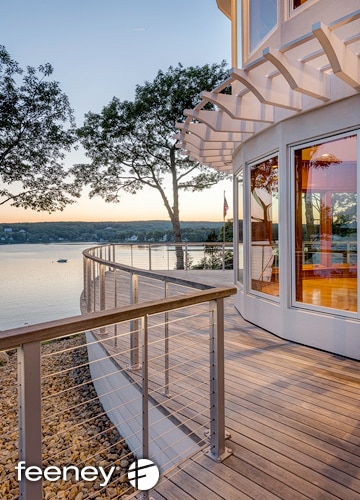
Laschever’s design process included significant research on luxury and vintage boats. That diligence is reflected throughout the home in custom elements such as porthole window casings and a pilot’s cabin, complete with lights and functioning horns, located on the top floor of the home.

On the Rail(ings)
Because the home was to feature multiple decks, including a curved deck on the top level, railings were an integral part of the overall design. The railings also needed to work with the theme of the home. At the same time, it was important to maximize the river view and to utilize materials that could withstand exposure to the elements found in a waterfront setting.
Knowing the home’s location would subject it to constant moisture, Laschever quickly rejected steel railings because of the repainting that would be required over time. He ultimately selected the Feeney DesignRail® aluminum railing system with stainless steel CableRail infill, which had been recommended to him by a local lumber yard.
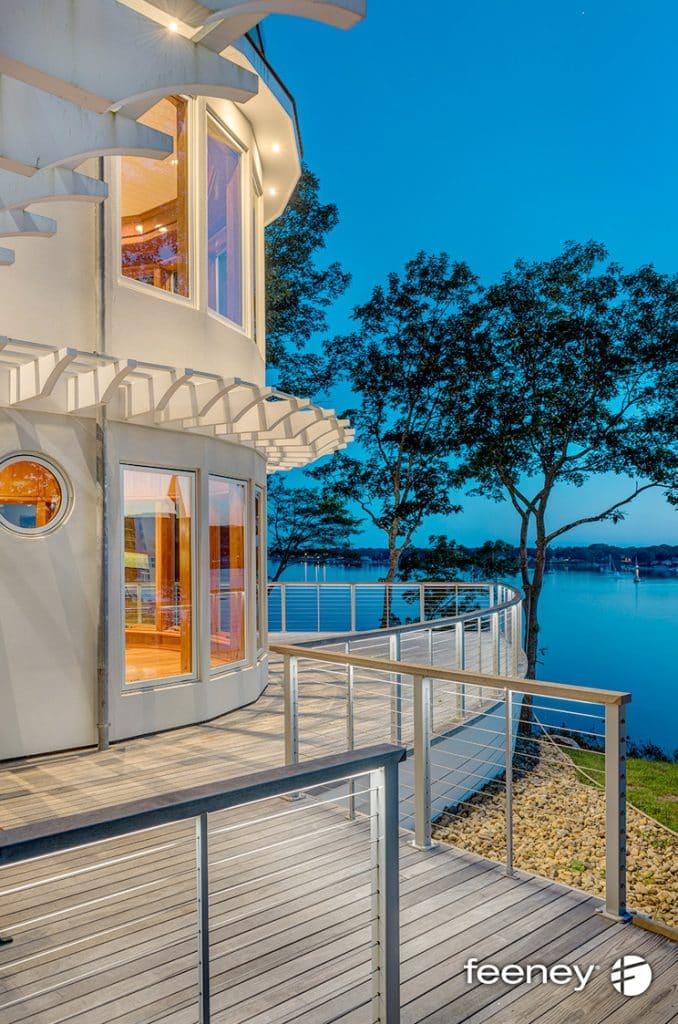
Feeney’s railings are made from 6000 series aluminum, with an AAMA-2604 powder-coated finish for durability. Notes Laschever, “Feeney’s products are great for saltwater environments, and even better in freshwater applications. They won’t rust, peel or require painting, which provides peace of mind.”
Laschever also appreciated the versatility of Feeney’s railing solutions. “I really liked the fact that the cable railing could be installed on either wood or metal posts, and that the aluminum railings were offered in a variety of colors. That design flexibility was an important consideration.”
Laschever ended up choosing silver railings, which best suited the home’s traditional steamship look. The challenge he then faced was how to incorporate the railings in such a way that they complemented the decks, which were to be finished using Ipe, a Brazilian hardwood similar to teak.
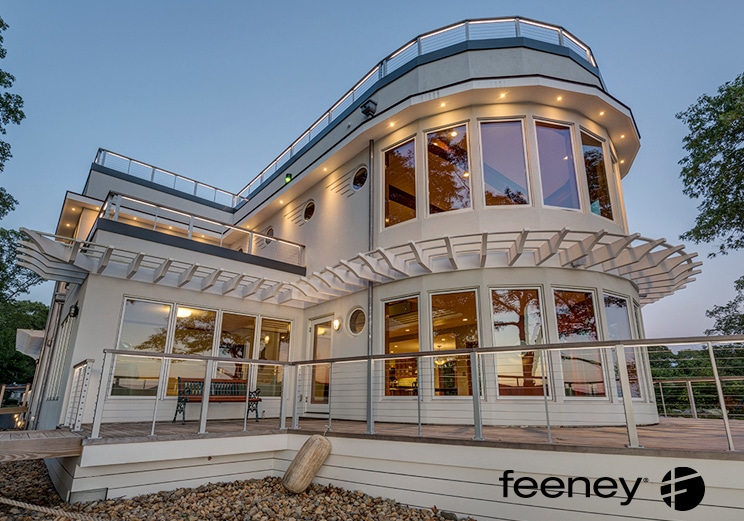
Getting It Right
Because of the uniqueness of the project, the deck and railing design required complex calculations and “outside-of-the-boat” thinking to achieve the desired aesthetic while also
meeting code requirements.

To create a seamless look, Laschever decided to go with a wooden top rail that would match the decking. Ipe cap rails were fabricated to cover the aluminum top rails. While he found it easy to attach the railing posts to the wooden deck using Feeney’s base mounting plate, penetrating the PVC roofing membrane that covered the parapet walls at the second and third floor decks was a challenge. Laschever didn’t want to fascia mount or screw through the fascia and stucco siding on the home’s exterior and needed an alternative option.

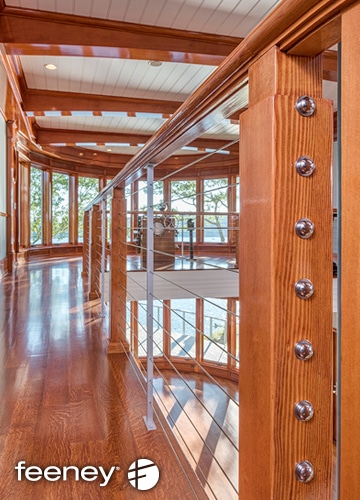
Laschever worked closely with the Feeney team to determine the best approach. The solution was to use Feeney’s stanchion-mounted posts, which enabled short stanchion pieces to be base-mounted directly to the substructure. To prevent leaking, 120 flashing boots were made from PVC. The stanchion bases were mounted on top of the parapet wall by screwing through the PVC membrane. The PVC boots were then placed over the mounting bases and the boots were welded to the PVC membrane to create a watertight seal. As a final step, the finished posts were sleeved over the exposed, sealed stanchions.
“What this did was allow us to have railing on top of the parapet walls,” Laschever explains. “On the lower deck, we mounted the posts directly to the top of the wood deck using a base plate and four lag screws. We did something similar on the roof-level parapet walls, except in those locations, PVC covers the base plates and is welded to the rest of the membrane to keep leaks from occurring.”
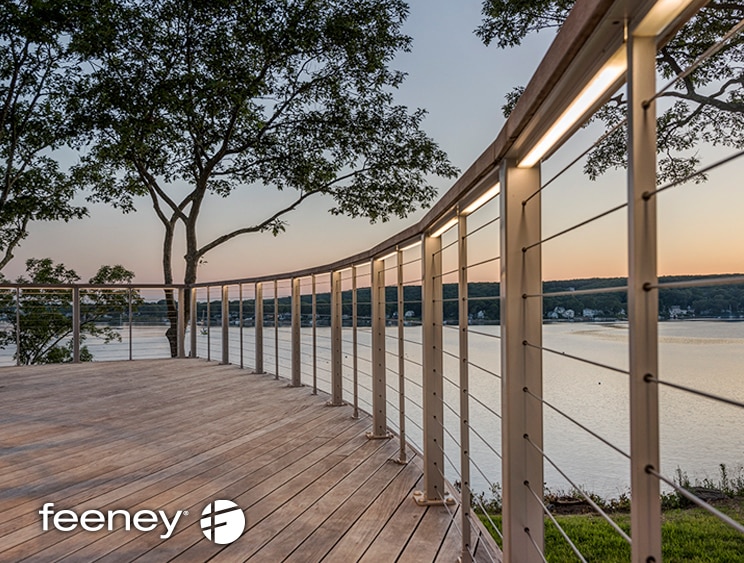
The finishing touch was installing Feeney’s LED under-rail lighting on the railings, which would accentuate the unique shape of the boat in the evenings while also suggesting the glamour of passenger boats that once cruised up and down the country’s rivers.
Comments Laschever, “The under-rail lighting enabled us to achieve a look not possible with steel pipe railings. The railings really transform at night as the light shines on the cable strands to provide a stunning, louvered look. You can look back across the river from the harbor and the house glows. It’s quite spectacular.”
